- Clone
- PC61 (See other available formats)
- Regulatory Status
- RUO
- Other Names
- IL-2Rα, Ly-43, p55, Tac
- Isotype
- Rat IgG1, λ
- Ave. Rating
- Submit a Review
- Product Citations
- publications
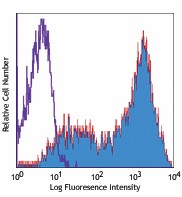
-

Con A-stimulated (3 days) BALB/c mouse splenocytes stained with PC61 PE
| Cat # | Size | Price | Quantity Check Availability | Save | ||
|---|---|---|---|---|---|---|
| 102007 | 50 µg | £47 | ||||
| 102008 | 200 µg | £155 | ||||
CD25 is a 55 kD glycoprotein also known as the low affinity IL-2Rα, Ly-43, p55, or Tac. It is expressed on activated T and B cells, thymocyte subsets, pre-B cells, and T regulatory cells. In association with CD122 (IL-2Rβ) and CD132 (common γ chain), CD25 forms the high affinity signaling IL-2 receptor.
Product DetailsProduct Details
- Verified Reactivity
- Mouse
- Antibody Type
- Monoclonal
- Host Species
- Rat
- Immunogen
- IL-2-dependent cytolytic mouse T-cell clone B6.1
- Formulation
- Phosphate-buffered solution, pH 7.2, containing 0.09% sodium azide.
- Preparation
- The antibody was purified by affinity chromatography, and conjugated with PE under optimal conditions.
- Concentration
- 0.2 mg/ml
- Storage & Handling
- The CD25 antibody solution should be stored undiluted between 2°C and 8°C, and protected from prolonged exposure to light. Do not freeze.
- Application
-
FC - Quality tested
- Recommended Usage
-
Each lot of this antibody is quality control tested by immunofluorescent staining with flow cytometric analysis. For flow cytometric staining, the suggested use of this reagent is ≤1.0 µg per million cells in 100 µl volume. It is recommended that the reagent be titrated for optimal performance for each application.
- Excitation Laser
-
Blue Laser (488 nm)
Green Laser (532 nm)/Yellow-Green Laser (561 nm)
- Application Notes
-
Additional reported applications (for the relevant formats) include: immunoprecipitation1,2, in vitro blocking of IL-2 binding to low- and high-affinity receptors1-4, growth inhibition of IL-2-dependent T-cell lines1-4, in vivo depletion of CD25+CD4+ Treg cells5-8,10, and immunohistochemical staining of acetone-fixed frozen sections2. PC61 antibody recognizes a different epitope than 3C7 antibody (Cat. No. 101902). For in vivo studies or highly sensitive assays, we recommend Ultra-LEAF™ purified antibody (Cat. No. 102040) with endotoxin < 0.01 EU/µg, Azide-Free, 0.2 µm filtered.
-
Application References
(PubMed link indicates BioLegend citation) -
- Lowenthal JW, et al. 1985. Nature 315:669. (IP, Block)
- Ceredig R, et al. 1985. Nature 314:98. (IP, IHC, Block)
- Lowenthal JW, et al. 1985. J. Immunol. 135:3988. (Block)
- Moreau JL, et al. 1987. Eur. J. Immunol. 17:929. (Block)
- Takahashi T, et al. 2000. J. Exp. Med. 192:303. (Deplete)
- Onizuka S, et al. 1999. Cancer Res. 59:3128. (Deplete)
- Lei TC, et al. 2005. Blood 105:4865. (Deplete)
- Pasare C, et al. 2004. Immunity 21:733. (Deplete)
- León-Ponte M, et al. 2007. Blood 109:3139.
- Cao OW, et al. 2007. Blood doi:10.1182/blood-2007-02-073304. (Deplete)
- Benson MJ, et al. 2007. J. Exp. Med. doi:10.1084/jem.20070719.
- Liu F, et al. 2011. Arch Toxicol. 85:1383. PubMed
- Anguela XM, et al. 2013. Diabetes. 62:551. PubMed
- Product Citations
-
- RRID
-
AB_312856 (BioLegend Cat. No. 102007)
AB_312857 (BioLegend Cat. No. 102008)
Antigen Details
- Structure
- Forms high affinity IL-2R with IL-2Rβ (CD122) and IL-2Rγ (CD132), 55 kD
- Distribution
-
Activated T cells and B cells, thymocyte subset, pre-B cells, T regulatory cells
- Function
- IL-2 receptor
- Ligand/Receptor
- IL-2
- Cell Type
- B cells, T cells, Thymocytes, Tregs
- Biology Area
- Immunology
- Molecular Family
- CD Molecules, Cytokine/Chemokine Receptors
- Antigen References
-
- Taniguchi T, et al. 1993. Cell 73:5-8.
- Waldmann TA. 1991. J Biol Chem. 266:2681-4.
- Read S, et al. 2000. J Exp Med. 192:295-302.
- Lowenthal JW, et al. 1985. J Immunol. 135:3988-94.
- Gene ID
- 16184 View all products for this Gene ID
- UniProt
- View information about CD25 on UniProt.org
Related FAQs
- What type of PE do you use in your conjugates?
- We use R-PE in our conjugates.
Other Formats
View All CD25 Reagents Request Custom ConjugationCustomers Also Purchased
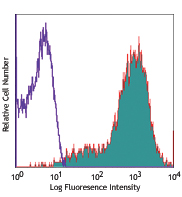
Compare Data Across All Formats
This data display is provided for general comparisons between formats.
Your actual data may vary due to variations in samples, target cells, instruments and their settings, staining conditions, and other factors.
If you need assistance with selecting the best format contact our expert technical support team.
-
APC anti-mouse CD25
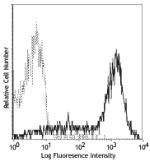
Con A-stimulated (3 days)splenocytes stained with PC61 APC -
Biotin anti-mouse CD25
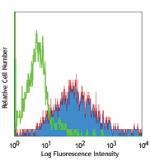
Con A-stimulated C57BL/6 splenocytes (3 days) stained with ... -
FITC anti-mouse CD25
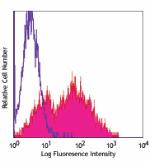
Con-A Stimulated (3 days) BALB/c mouse splenocytes stained w... -
PE anti-mouse CD25
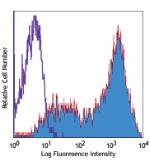
Con A-stimulated (3 days) BALB/c mouse splenocytes stained w... -
PE/Cyanine5 anti-mouse CD25
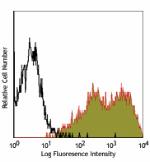
Con A-stimulated (day-3) C57BL/6 mouse splenocytes stained w... -
Purified anti-mouse CD25
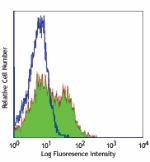
C57BL/6 mouse splenocytes stained with purified PC61, follow... 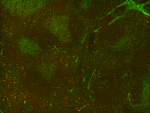
Fresh, frozen mouse spleen was stained with purified CD25 cl... -
PE/Cyanine7 anti-mouse CD25
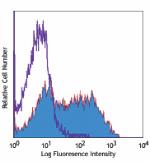
Con A-stimulated (2 days) BALB/c mouse splenocytes stained w... -
Alexa Fluor® 488 anti-mouse CD25
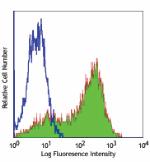
Con A-stimulated (3 days) BALB/c mouse splenocytes stained w... -
Alexa Fluor® 647 anti-mouse CD25
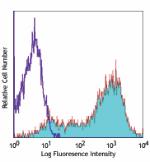
Con A-stimulated (3 days) BALB/c mouse splenocytes stained w... -
Pacific Blue™ anti-mouse CD25
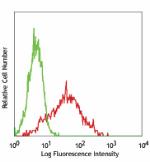
Con A-stimulated (3 days) C57BL/6 mouse splenocytes stained ... -
Alexa Fluor® 700 anti-mouse CD25
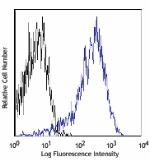
Con A-stimulated (day-3) C57BL/6 mouse splenocytes stained w... -
APC/Cyanine7 anti-mouse CD25
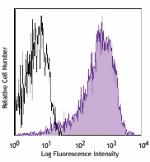
Con A-stimulated (day-3) C57BL/6 mouse splenocytes stained w... -
PerCP/Cyanine5.5 anti-mouse CD25
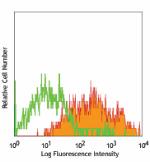
Con A-stimulated C57BL/7 splenocytes (Day 3) stained with PC... -
PerCP anti-mouse CD25
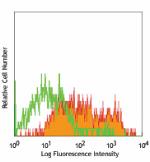
Con A-stimulated C57BL/7 splenocytes (Day 3) stained with P... -
Brilliant Violet 421™ anti-mouse CD25
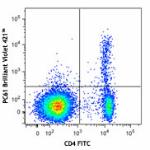
C57BL/6 mouse splenocytes were stained with CD4 FITC and CD2... 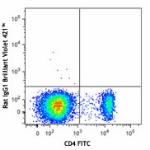
-
Brilliant Violet 605™ anti-mouse CD25
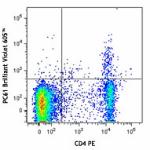
C57BL/6 mouse splenocytes were stained with CD4 PE and CD25 ... -
Brilliant Violet 650™ anti-mouse CD25
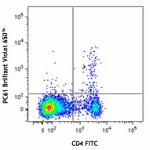
C57BL/6 mouse splenocytes were stained with CD4 FITC and CD2... -
Ultra-LEAF™ Purified anti-mouse CD25

Con A-stimulated (3 days) BALB/c mouse splenocytes stained w... -
Brilliant Violet 510™ anti-mouse CD25
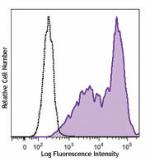
Con A-stimulated (3 days) Balb/c splenocytes were stained wi... -
PE/Dazzle™ 594 anti-mouse CD25
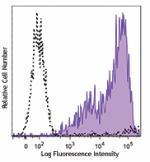
Con A-stimulated (3 days) C57BL/6 mouse splenocytes were sta... -
Brilliant Violet 711™ anti-mouse CD25
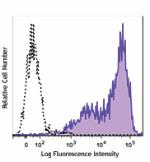
Con A-stimulated (3 days) C57BL/6 mouse splenocytes were sta... -
Brilliant Violet 785™ anti-mouse CD25
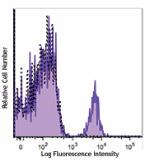
Con A-stimulated (3 days) C57BL/6 mouse splenocytes were sta... -
Alexa Fluor® 594 anti-mouse CD25
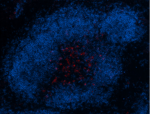
C57BL/6 mice were intraperitoneally injected with 100 µg LEA... -
APC/Fire™ 750 anti-mouse CD25

C57BL/6 mouse splenocytes were stained with CD4 PE and CD25 ... 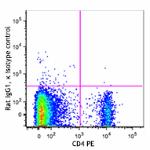
-
TotalSeq™-A0097 anti-mouse CD25
-
KIRAVIA Blue 520™ anti-mouse CD25
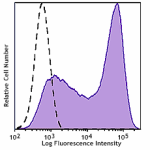
Con A-stimulated (3 days) C57BL/6 mouse splenocytes were sta... 
C57BL/6 mouse splenocytes were stained with CD4 APC and CD25... -
TotalSeq™-B0097 anti-mouse CD25
-
TotalSeq™-C0097 anti-mouse CD25
-
Spark NIR™ 685 anti-mouse CD25 Antibody
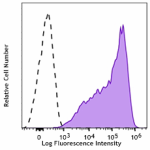
Con A-stimulated (day-3) C57BL/6 mouse splenocytes were stai... -
PE/Fire™ 640 anti-mouse CD25
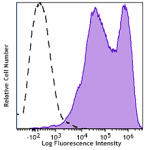
Con A-stimulated (3 days) C57BL/6 mouse splenocytes were sta... 
C57BL/6 mouse splenocytes were stained with anti-mouse CD4 F... -
Spark YG™ 581 anti-mouse CD25

C57BL/6 mouse splenocytes were stained with anti-mouse CD4 P... -
APC/Fire™ 810 anti-mouse CD25
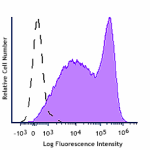
Con A-stimulated (3 days) C57BL/6 mouse splenocytes were sta... -
Brilliant Violet 750™ anti-mouse CD25

Mouse (C57BL/6) splenocytes were stained with anti-mouse CD4... -
PerCP/Fire™ 780 anti-mouse CD25

C57BL/6 mouse splenocytes were stained with anti-mouse CD4 A... -
PE/Fire™ 700 anti-mouse CD25

C57BL/6 mouse splenocytes were stained with anti-mouse CD4 (... -
Spark PLUS UV™ 395 anti-mouse CD25

C57BL/6 mouse splenocytes were stained with anti-mouse CD4 (...
 Login / Register
Login / Register 












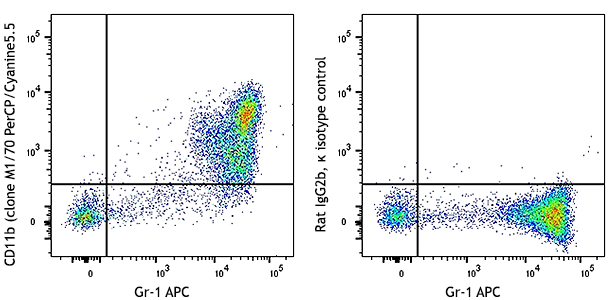



Follow Us